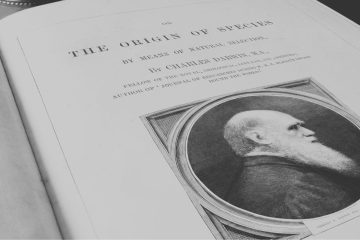What Happened On June 29th?
On January 9, 2007, at the Macworld conference in San Francisco, Apple CEO Steve Jobs unveil the first iPhone. This sleek, touchscreen device changed not just the phone industry but daily interactions with technology.
The Core Of The Apple
Steve Jobs, dressed in his trademark black turtleneck and jeans, began his keynote speech with characteristic flair. He spoke of three new products: a widescreen iPod with touch controls, a mobile phone, and an internet communicator. The audience watched in awe as Jobs revealed that these were not three separate devices but one device—the iPhone. “Today, Apple is going to reinvent the phone,” he proclaimed.
This new device combined an iPod, a phone, and an internet communicator into a single, elegant package. The iPhone featured a 3.5-inch touchscreen display, a 2-megapixel camera, and the innovative iOS operating system. The home button, sleek design, and intuitive interface set it apart from anything else on the market.
Seeds Of Innovation
The iPhone’s multi-touch display allowed users to pinch, swipe, and tap their way through apps and content. The virtual keyboard replaced the physical buttons that dominated other smartphones. Safari, Apple’s web browser, enabled users to experience the full internet on a mobile device for the first time.

Initially, the first iPhone did not support third-party apps. All software on the device came from Apple, a limitation that changed with the introduction of the App Store in 2008. The iPhone’s prototype had a plastic screen, but Jobs insisted on switching to glass, believing it would be more scratch-resistant.
The iPhone also introduced visual voicemail, allowing users to see a list of their voicemails and choose which ones to listen to, a feature that set it apart from other phones at the time. The device’s sensors, such as the accelerometer and proximity sensor, enabled dynamic screen rotation and auto-dimming. The iPhone’s capabilities were enhanced by the iTunes Store, allowing users to purchase and download music, videos, and apps directly to their device.
Shaking Tech Branches
Competitors scrambled to develop similar touchscreen smartphones, but none could match Apple’s seamless integration of hardware and software. The iPhone’s success prompted Google to speed up its development of Android, which became Apple’s primary rival in the smartphone market.
Apple partnered with AT&T (then Cingular Wireless) for the iPhone’s exclusive launch in the United States. The collaboration signified the importance of network capabilities in delivering a seamless user experience and set a precedent for future carrier-device partnerships. AT&T reportedly took a gamble on the iPhone, agreeing to an unusual revenue-sharing model with Apple.
The iPhone’s exclusive partnership with AT&T also influenced how consumers purchased phones, shifting from buying through carriers to purchasing directly from manufacturers, which became a trend in later years.
The “Orchard’s” Response
The public’s reaction to the iPhone was extraordinary. Lines formed outside Apple Stores around the world as people eagerly awaited the chance to own this surreal device. The iPhone became a status symbol, and its distinctive design and interface quickly became icons of modern technology.
Reviewers praised the iPhone’s design, functionality, and user experience. David Pogue of The New York Times called it “the best phone anyone has ever made,” while Walt Mossberg of The Wall Street Journal highlighted its “beautiful software” and “groundbreaking interface.”
Despite the initial excitement, some early criticisms focused on the iPhone’s lack of certain features, such as the inability to send picture messages (MMS) and the absence of 3G support, which was addressed in later models. Interestingly, the first iPhone lacked a copy-and-paste feature, which was introduced only in 2009 with the iPhone OS 3.0 update.

Behind The Scenes
The development of the iPhone remained shrouded in secrecy. Apple engineers worked on the project under strict non-disclosure agreements, and the device’s final design was revealed to only a select few within the company before its public debut. The project was internally known as “Project Purple,” and its development spanned over two and a half years.
Apple’s design team, led by Jony Ive, spent countless hours perfecting the virtual keyboard to ensure it was responsive and easy to use. They even created a custom bubble level app to test the accuracy of the accelerometer.
The iPhone’s initial design included a physical click wheel, similar to the iPod’s, which was ultimately scrapped in favor of the touch screen interface. This decision showed Apple’s commitment to innovation and willingness to break away from its successful product designs to create something entirely new.
Redefining Technology Itself
The release of the first iPhone revolutionized the way people communicated, accessed information, and entertained themselves. The iPhone set the standard for mobile devices and paved the way for a host of new technologies, including app ecosystems, mobile internet usage, and the rise of social media platforms.
The iPhone influenced design, culture, and business practices across industries. Companies worldwide sought to emulate Apple’s success, adopting user-centric design principles and prioritizing seamless integration between hardware and software. The device’s influence on user interface design and touchscreen technology could be seen in numerous modern devices, from smartphones to tablets and smartwatches.
The ripple effect of the iPhone’s release also influenced the development of tablets, smartwatches, and other smart devices, contributing to the growth of the Internet of Things (IoT). The App Store created an entirely new market for mobile applications, leading to the rise of app developers and new business models centered around app monetization.





